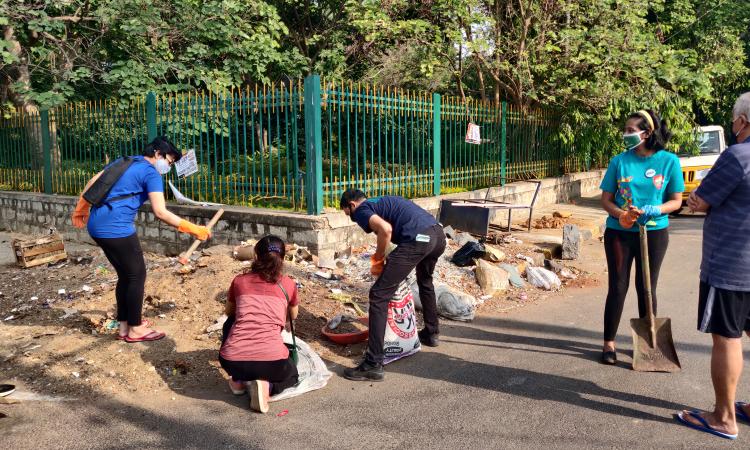
The threat of climate change is real
The threat of climate change is real and the need to act on it to prevent further damage and build resilence is urgent! While the transition towards a low carbon world is a necessity that we all need to face in the coming years, this has to be based on reaching a balance between achieving economic growth that is based on more sustainable methods and outcomes.
It is also crucial that it involves everyone in the process. But how do we ensure that this transition to a low carbon world involves the ones who are affected the most by climate change and is just and equitable? This will happen only when there is a groundswell of people actively engaged in climate action.
Equipping all with the tools and opportunities to fight climate change
And co-creators and co-investors are necessary for large scale change, not beneficiaries! We need to build towards more self-organised and self-resilient systems where everyone has agency and has the tools and capacities to make a difference to their own lives to start with, and then others around them.
This approach, which empowers those who will be the worst and soonest hit by the vicissitudes of climate change, accelerates the transition toward just, inclusive, self-organised, and resilient systems. Social entrepreneurs perceive the innate ability for changemaking in every individual and seek to ignite this potential.
Despite the intuitive understanding of the transformative power of this principle, many stakeholders and groups are left out of the climate conversations and actions.
Involving youth for climate change action
While opportunities for young people to engage meaningfully with the issue are limited, the story of Taanika Shankar can serve as a source of inspiration for all who want to make a difference.
Taanika Shankar’s journey as a changemaker started with fixing sanitation systems in her local neighborhood in order to implement water saving initiatives. In 2020, she co-founded Yugma Network, a youth movement bringing holistic ways of achieving ground-level environmental justice through campaigns, education, legal and policy interventions, and citizen-local government interactions.
She has been attending local governance ward meetings, playing a significant role in mobilizing youth during the Covid-19 pandemic, and has worked on crowdsourcing local pothole data which was used by the Karnataka high court to make the local government more accountable.
How did Taanika find her voice and action at such an early age?
The answer comes through the work of Reap Benefit. Reap Benefit is building a national movement for localized engagement of youth. Children become “Solve Ninjas” in their communities—in other words, citizen leaders and innovators who can resolve their local environmental and civic problems (waste, water, sanitation, and air quality).
Solve Ninjas are introduced to local environmental issues through a participatory citizen problem-solving methodology. The organisation uses gamification to deliver sessions that cover different topics spread over a year. This is a four-step process:
1) Discover the local problem;
2) Investigate using assessment tools to collect granular data around local issues;
3) Solve problems by devising local solutions using local materials and;
4) Communicate by sharing the process and spread, making ‘green’ a habit.
Tannika joined as a Solve Ninja in the 9th grade and was a youth board member from 2017-20. Reap Benefit shifts the focus from innovation to impact creation. Their model believes that individual acts lead to collective and systemic action.
It builds the ecosystem via three tools—
• Local data,
• Local solutions, and
• Local governance
This approach enables young people to take an action-based and problem-solving approach to community problems.
To date, Solve Ninjas have helped save 54.3 million liters of water, diverted 187 tons of waste from landfills and conserved 1.7 million units of electricity. Another journey has seen 50 Solve Ninjas such as Taanika start their own initiatives and five have recently been elected as local government leaders in their villages. They are driving inclusive and sustainable development by crowdsourcing data, creating local solutions and mobilizing communities.
Learning points that emerge on how to replicate these models elsewhere
- Build and promote action-focused narratives.
- Break up the pursuit of climate action into simple, concrete steps
- Make information available so that it enables people to take individual and collective action
- Find and solve a local problem as this is more relatable and feels immediate.
- Interlink environmental issues with civic problems to enhance relevancy and hence participation of the community.
- Celebrate the action and impact to engage more people.
- Begin with the individual since individual acts lead to collective action, resulting in systemic action.
Maria Clara Pinheiro is the Director, Ashoka, South Asia. Maya Chadrasekaran is the Co Founder and Managing Director of Green Artha, a climate venture fund and innovation firm. Vidushi Kamani is the Head of the Ecosystems Programme at Green Artha.